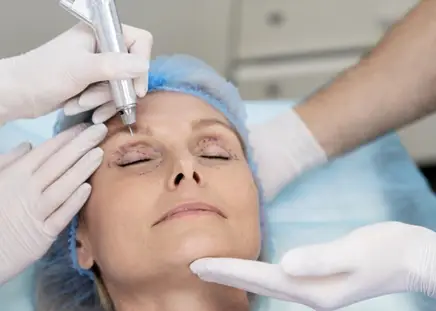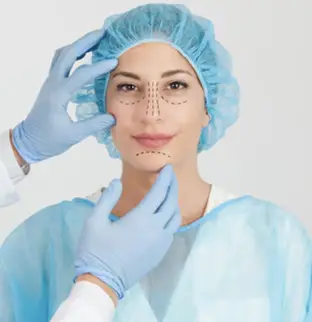Blepharoplasty: Achieving a Youthful Look Through Eyelid Surgery
In the pursuit of a youthful and refreshed appearance, many individuals turn to cosmetic procedures to rejuvenate their facial features. Among these procedures, blepharoplasty, or eyelid surgery, stands out as a popular choice for those seeking to address signs of aging around the eyes. This surgery can dramatically enhance the appearance of the upper and lower eyelids, offering a more vibrant and youthful look. This comprehensive guide explores the ins and outs of blepharoplasty, including what it is, who it’s for, the procedure itself, recovery, and its benefits.
What is Blepharoplasty?
Blepharoplasty is a surgical procedure designed to improve the appearance of the eyelids. It can be performed on the upper eyelids, lower eyelids, or both, depending on the patient’s needs and aesthetic goals. The surgery involves the removal of excess skin, muscle, and sometimes fat to create a smoother and more youthful appearance around the eyes.

Types of Blepharoplasty
- Upper Blepharoplasty: This procedure targets the upper eyelids, addressing issues such as drooping eyelids, excess skin that can impair vision, and a tired or aged appearance. It involves removing excess skin and fat and tightening the remaining tissue.
- Lower Blepharoplasty: This procedure focuses on the lower eyelids, aiming to reduce puffiness, bags under the eyes, and wrinkles. It may involve removing or repositioning fat deposits, tightening the skin, and addressing muscle laxity.
- Double Blepharoplasty: Commonly performed in Asian populations, this procedure creates a crease in the upper eyelid to enhance the appearance of the eyes. It can be done alone or in combination with other eyelid surgeries.
Who is a Good Candidate for Blepharoplasty?
Blepharoplasty is suitable for both men and women who are in good overall health and have realistic expectations about the outcome of the surgery. Ideal candidates typically experience one or more of the following concerns:
- Drooping upper eyelids that may impair vision
- Excess skin on the upper eyelids that creates a tired or aged appearance
- Puffiness or bags under the eyes
- Fine lines and wrinkles around the lower eyelids
- A desire to enhance the natural contours of the eyes for a more youthful look
Before undergoing blepharoplasty, it is essential to have a thorough consultation with a board-certified plastic surgeon to discuss your goals, medical history, and any potential risks or complications.
The Blepharoplasty Procedure
Preoperative Preparation
Before the surgery, your surgeon will provide detailed instructions to ensure you are well-prepared for the procedure. This preparation may include:
- Medical Evaluation: A thorough medical evaluation to ensure you are fit for surgery.
- Medication Review: Discussing any medications you are currently taking and advising on which ones to avoid before surgery.
- Smoking Cessation: If you smoke, you will be advised to quit several weeks before and after the surgery to promote healing.
- Arranging Transportation: Since you will not be able to drive yourself home after the procedure, you should arrange for transportation.
The Surgery
Blepharoplasty is typically performed on an outpatient basis under local anesthesia with sedation or general anesthesia, depending on the complexity of the procedure and the patient’s preference.
- Incision Placement: The surgeon will make precise incisions along the natural creases of the eyelids to minimize visible scarring. For upper blepharoplasty, the incision is usually made within the natural crease of the upper eyelid. For lower blepharoplasty, the incision can be made just below the lower lash line or inside the lower eyelid (transconjunctival approach).
- Tissue Removal and Repositioning: The surgeon will remove or reposition excess skin, muscle, and fat through these incisions. In some cases, fat may be redistributed to eliminate puffiness or bulges and create a smoother contour.
- Closure: Once the necessary adjustments have been made, the incisions are carefully closed with sutures or surgical adhesive. These sutures are typically removed within a week of the surgery.

Recovery
Recovery from blepharoplasty varies from patient to patient, but most individuals can expect the following:
- Immediate Post-Operative Period: Swelling, bruising, and mild discomfort are common in the days following surgery. Applying cold compresses and keeping your head elevated can help reduce these symptoms.
- Follow-Up Appointments: Your surgeon will schedule follow-up appointments to monitor your healing progress and remove any sutures. It is essential to attend these appointments to ensure optimal results.
- Resuming Activities: Most patients can return to work and normal activities within one to two weeks, although strenuous activities and heavy lifting should be avoided for a few weeks to prevent complications.
- Final Results: The final results of blepharoplasty become more apparent as swelling and bruising subside, typically within a few months. Patients can enjoy a more youthful and refreshed appearance that can last for many years.
Benefits of Blepharoplasty
Blepharoplasty offers a range of aesthetic and functional benefits, making it one of the most sought-after cosmetic procedures. Some of the key benefits include:
- Enhanced Appearance: By addressing sagging eyelids, puffiness, and wrinkles, blepharoplasty can significantly improve the overall appearance of the eyes, making you look more alert, refreshed, and youthful.
- Improved Vision: For individuals with severe drooping of the upper eyelids, blepharoplasty can remove excess skin that obstructs vision, resulting in improved peripheral vision and overall visual clarity.
- Boosted Confidence: A more youthful and rejuvenated appearance can have a positive impact on self-esteem and confidence, enhancing your quality of life.
- Long-Lasting Results: The results of blepharoplasty are long-lasting, and while the aging process continues, many patients enjoy the benefits of the surgery for several years.
- Minimal Scarring: Because the incisions are strategically placed along the natural creases of the eyelids, scarring is minimal and typically well-concealed.
Potential Risks and Complications
As with any surgical procedure, blepharoplasty carries potential risks and complications, although they are relatively rare. It is important to discuss these with your surgeon and understand how they can be minimized. Potential risks include:
- Infection: Although rare, infections can occur and may require treatment with antibiotics.
- Scarring: While scarring is minimal and well-concealed, some patients may experience more noticeable scars.
- Dry Eyes: Temporary dry eyes are common after surgery, but they usually resolve with the use of lubricating eye drops.
- Difficulty Closing Eyes: In rare cases, some patients may experience difficulty closing their eyes completely, which can lead to dryness and irritation.
- Asymmetry: Although surgeons strive for symmetry, slight differences between the eyes can occur.
- Anesthesia Risks: As with any surgery involving anesthesia, there are inherent risks, including allergic reactions or complications.

Choosing the Right Surgeon
Selecting a board-certified plastic surgeon with extensive experience in blepharoplasty is crucial to achieving the best results. Here are some tips for choosing the right surgeon:
- Credentials: Ensure the surgeon is board-certified by a recognized medical board, such as the American Board of Plastic Surgery or an equivalent in your country.
- Experience: Look for a surgeon with a proven track record of performing successful blepharoplasty procedures. Ask to see before-and-after photos of previous patients.
- Patient Reviews: Read reviews and testimonials from previous patients to gauge their satisfaction with the surgeon’s work.
- Consultation: Schedule a consultation to discuss your goals, ask questions, and assess the surgeon’s approach and bedside manner. This is an opportunity to ensure you feel comfortable and confident in their care.
Conclusion
Blepharoplasty, or eyelid surgery, is a highly effective procedure for achieving a youthful and refreshed appearance. By addressing sagging eyelids, puffiness, and wrinkles, blepharoplasty can enhance your facial features, improve vision, and boost your confidence. Understanding the procedure, recovery, and potential risks is essential for making an informed decision. Consulting with a board-certified plastic surgeon will help you determine if blepharoplasty is right for you and ensure you achieve the best possible results. With the right approach, blepharoplasty can be a transformative experience, allowing you to look and feel your best for years to come.
